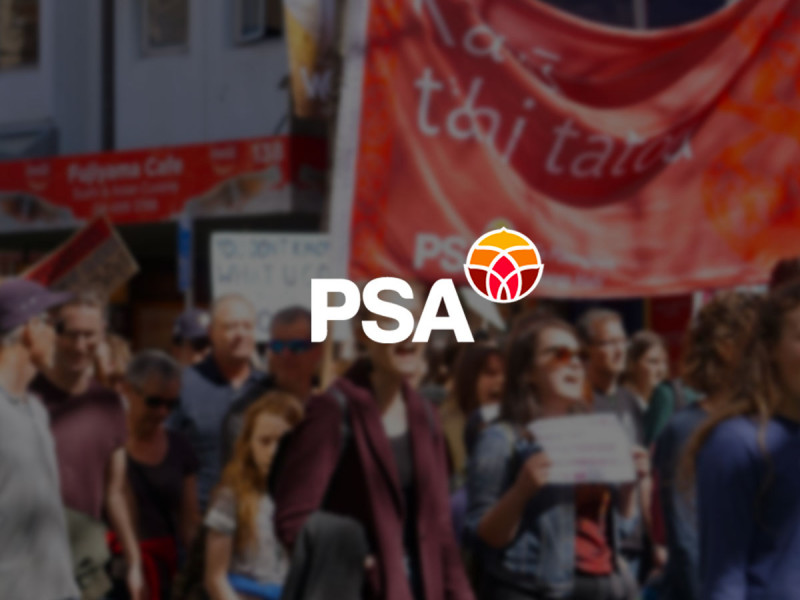In February this year, the PSA executive board signed off on the Ngā Kaupapa document, a set of principles on supporting Māori in the workplace.
A key part of this work by the PSA’s two national organisers: Māori, Tauia Macdonald and Tracey Klenner, and Te Kōmiti o Te Hāpori o te Rātonga mahi ā te Kāwanatanga (Public Service Sector Rūnanga) was establishing a set of ideal model clauses for collective bargaining that captured how to best recognise tikanga and te reo in the public service sector.
“This resource will help delegates and organisers in bargaining teams to effectively negotiate key clauses for Māori members into collective agreements,” said Tauia Macdonald.
“The resource will be in a form of tool kit that will include wording, rationale, examples of other agreements and their impact on those organisations.”
This work has opened up further scope for the PSA to examine recognition of te reo Māori and tikanga Māori across all five sectors.
Having an extensive database of collective agreements put the PSA in a strong starting position in undertaking this research. Examples that stood out were the Hauroa Māori work scale in the DHB Allied and Technical agreement, and collective agreements at the Department of Internal Affairs, Ministry of Education, and Te Taura Whiri i te reo Māori (Māori Language Commission).
The PSA engaged with Te Taura Whiri during our planning stages and identified that the scope of the research should also include:
- How the public service values Māori cultural skillsets;
- Whether the wider state sector values Māori cultural skills and upholds Te Tiriti o Waitangi partnership obligations to its employers;
- How agencies promote use of and proficiency in te reo Māori.
Māori in the public service
The wider scope of this analysis meant bringing in a researcher, Taneora Ryall, who was tasked with visiting public service organisations and finding out how they engage with their Māori workers and uphold tikanga.
Taneora will report back to the Kaitiakatanga working group, who were put together from members and delegates from Te Rūnanga o Ngā Toa Āwhina, the PSA’s Māori structure, to support the implementation of Ngā Kaupapa.
“The PSA is interested in what a good workplace for Māori looks like,” says Taneora. “The point of this research is to see what worksites are doing for Māori right now, which will inform our own thoughts on how to improve our recommended practices.”
The research is primarily taking the form of dialogue with PSA delegates in selected worksites, as well as management, human resources, and other Māori workers. As the PSA already has all of our collective agreements on file, Taneora was able to focus in on information that was lacking, such as policies, management styles, and workers’ experiences.
Dialogue with HR and management was useful in comparing policies and aspirations to the realities of working life as Māori.
Workplace challenges
Taneora has found some challenges for Māori in the public service. A commonality that has stood out to him was difficulties in gaining proper recognition for the cultural work that they do.
One worksite preferred not to have extra remuneration for cultural competency, instead choosing to hire on a tikanga specialist. An unexpected problem with this was that some staff members were still asking other Māori workmates to assist them in activities such as waiata and mihi whakatau for new employees.
Pakeha workmates often felt more comfortable talking to a team-mate or familiar Māori colleague than a specialist they hadn’t previously interacted with.
Another common barrier to better engagement with tikanga was often a lack of education at the management level. Taneora says “issues staff often run into is that implementation relies on management having proper competency in the Māori world.
Important cultural practices, such as time for tangihanga, will only be allowed for when tikanga has been normalised at the top levels of an organisation.”
Māori staff members in various enterprises agree with this, often indicating to Taneora that cultural competency is more usually found at the ‘bottom tiers’ of an organisation. Hiring Māori at management level or giving Māori input to leadership is vital for tikanga to be properly implemented.
What happens next
Taneora is working on having a draft report of what best practice for supporting Māori workers looks like by the end of June.
With Ngā Kaupapa outlining what an ideal workplace can look like for Māori, Taneora’s research will help to develop a toolkit for organisers and delegates to use to achieve that change.
Tauia says “this toolkit will assist the PSA bargaining teams to be engaged, informed and proactive in progressing positive change on behalf of our Māori members”.
As this work is completed, Ngā Kaupapa will be used to bring up other challenges for the PSA to address, for Māori members to have better working lives.
Case study: NZQA
The New Zealand Qualifications Authority have a good knowledge of who in their organisation identifies as Māori, a basic requirement for positive change that some worksites haven’t met. Management and staff have an agreement to instil tikanga across all levels, which is supported at the highest levels by the NZQA chief executive and deputy chief executive Māori.
The Deputy Chief Executive Māori is responsible for:
- leadership and management of Te Rautaki Māori - NZQAs Māori Strategy;
- managing strategic relationships with Māori/Iwi, including Ngā Kaitūhono;
- supporting NZQA’s commitment to accelerated Māori learner success and advanced uses of mātauranga Māori.
Māori working at NZQA have expressed pride at their organisation’s achievements in supporting tikanga and Māori workers. Practices such as mihi whakatau for new members and waiata have been normalised within the NZQA, who have also based organisational values on tikanga.
Increasing cultural competency in tikanga and te reo is a priority within NZQA, who have dedicated resources to an active Māori strategy.
By Dan Phillips
This article is from the March 2016 issue of the PSA Journal. You can read back issues of the Journal by clicking here.









